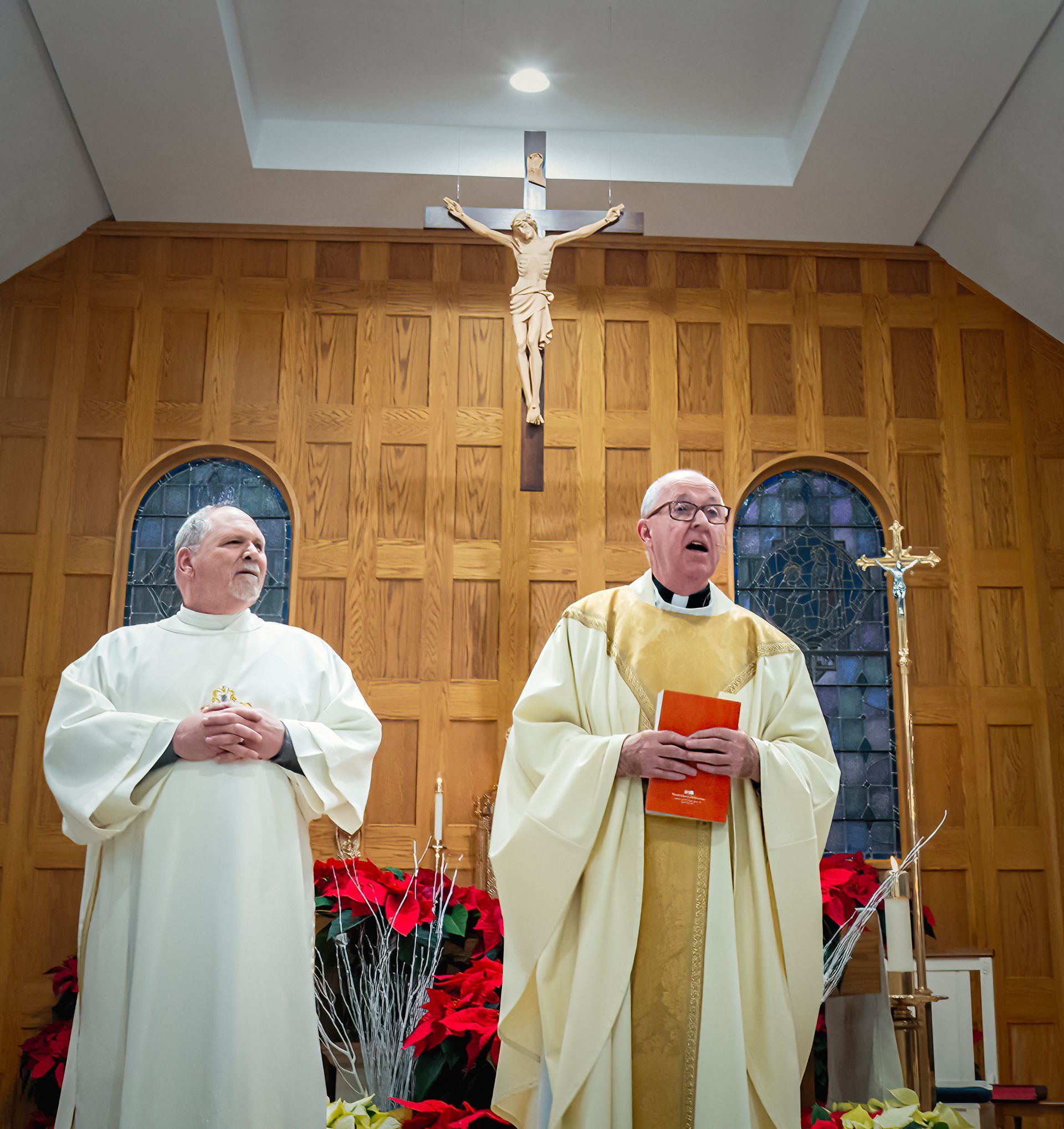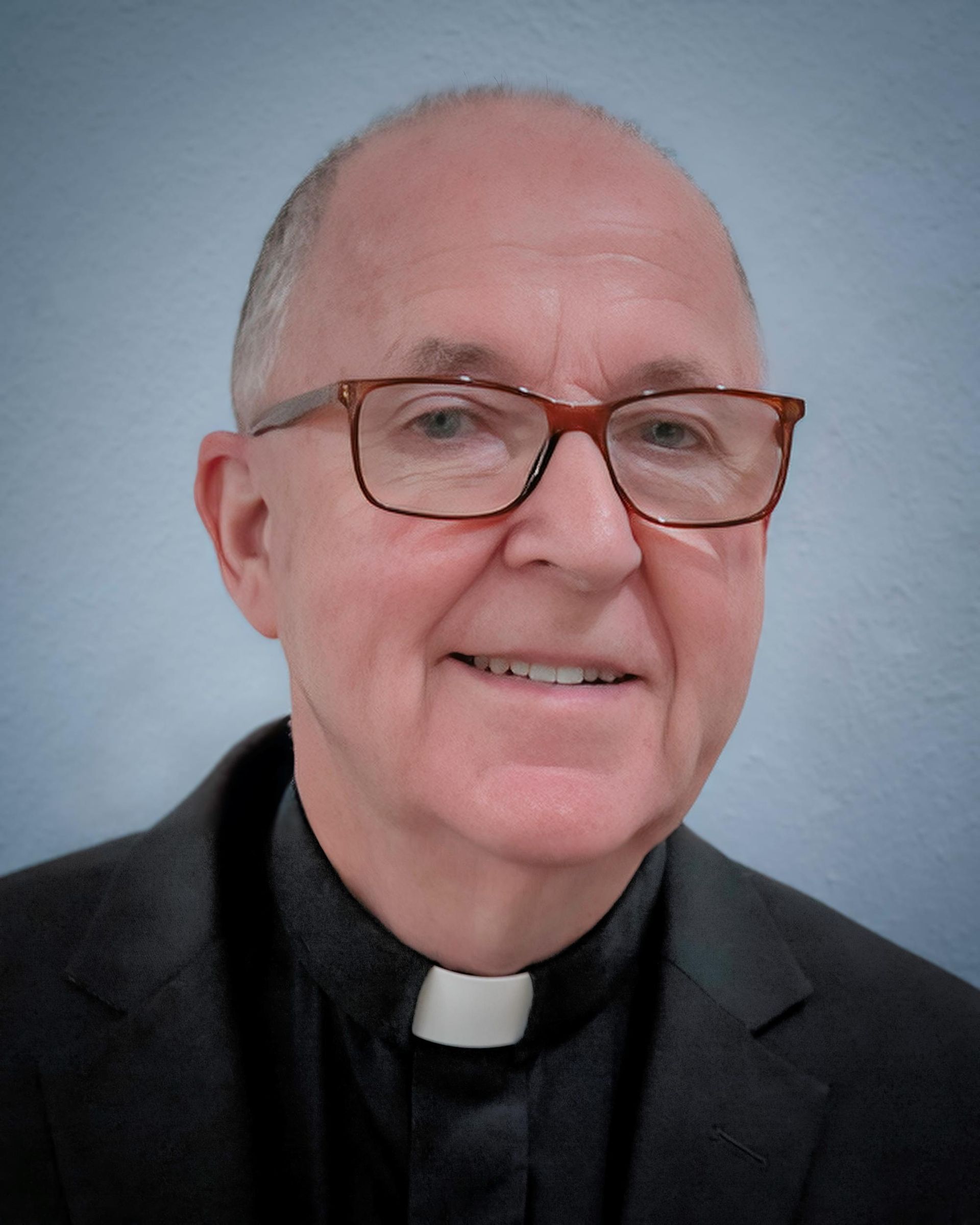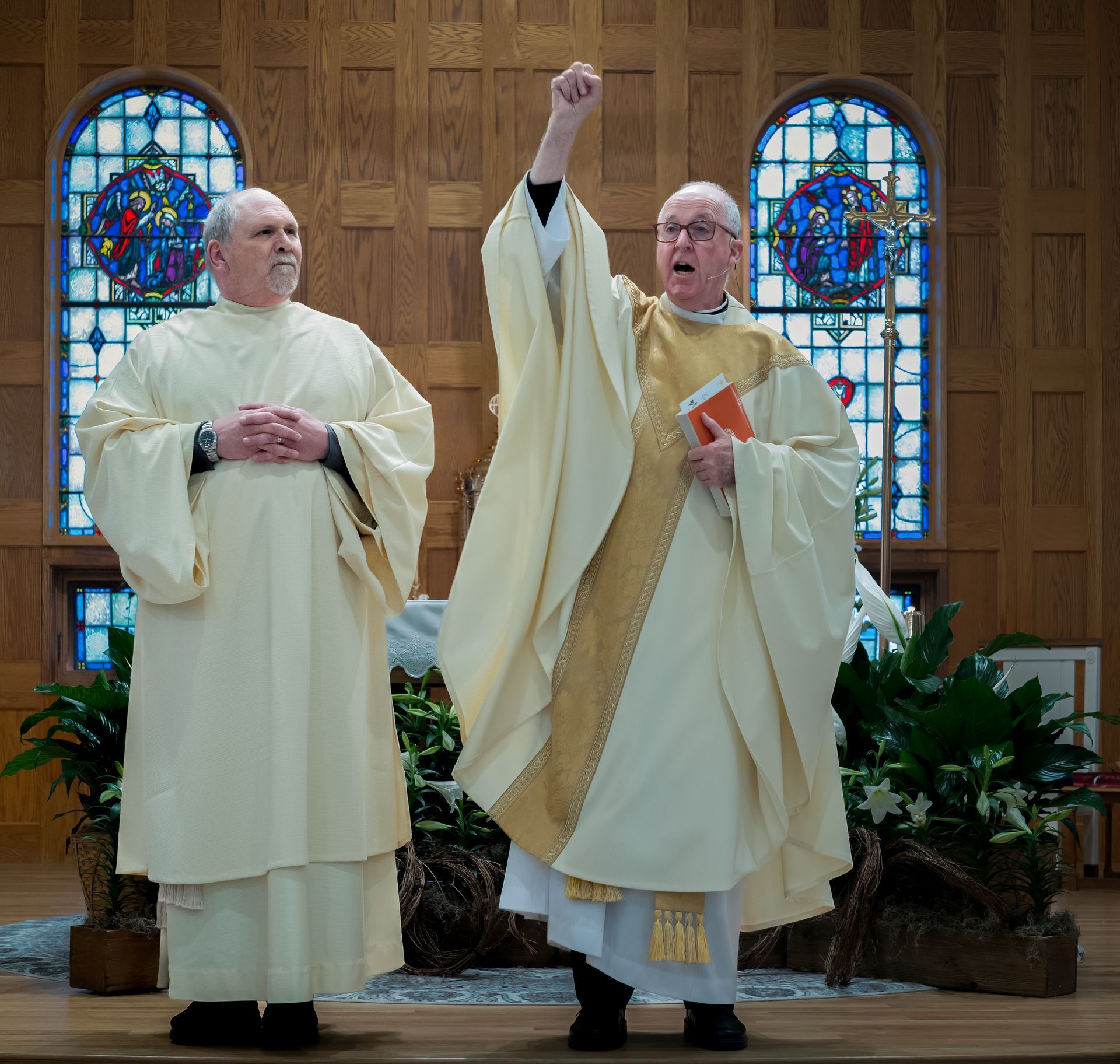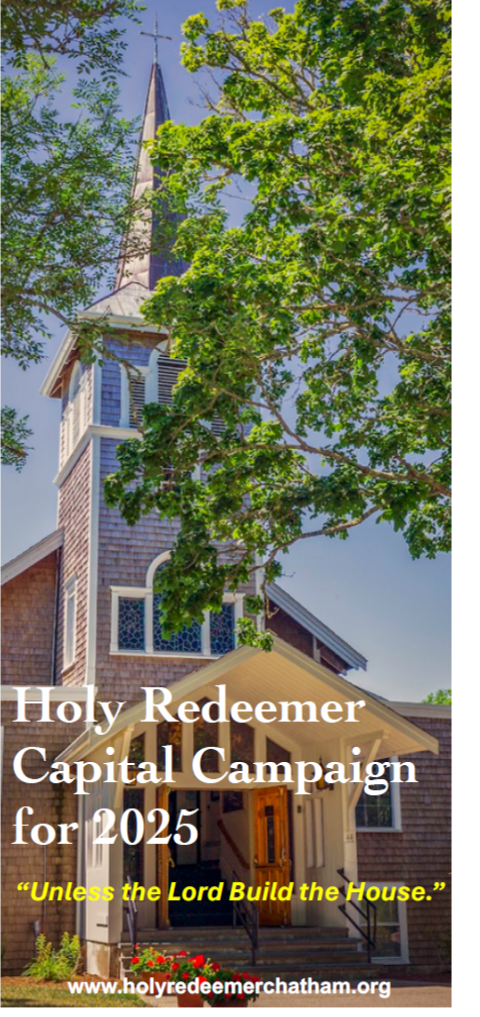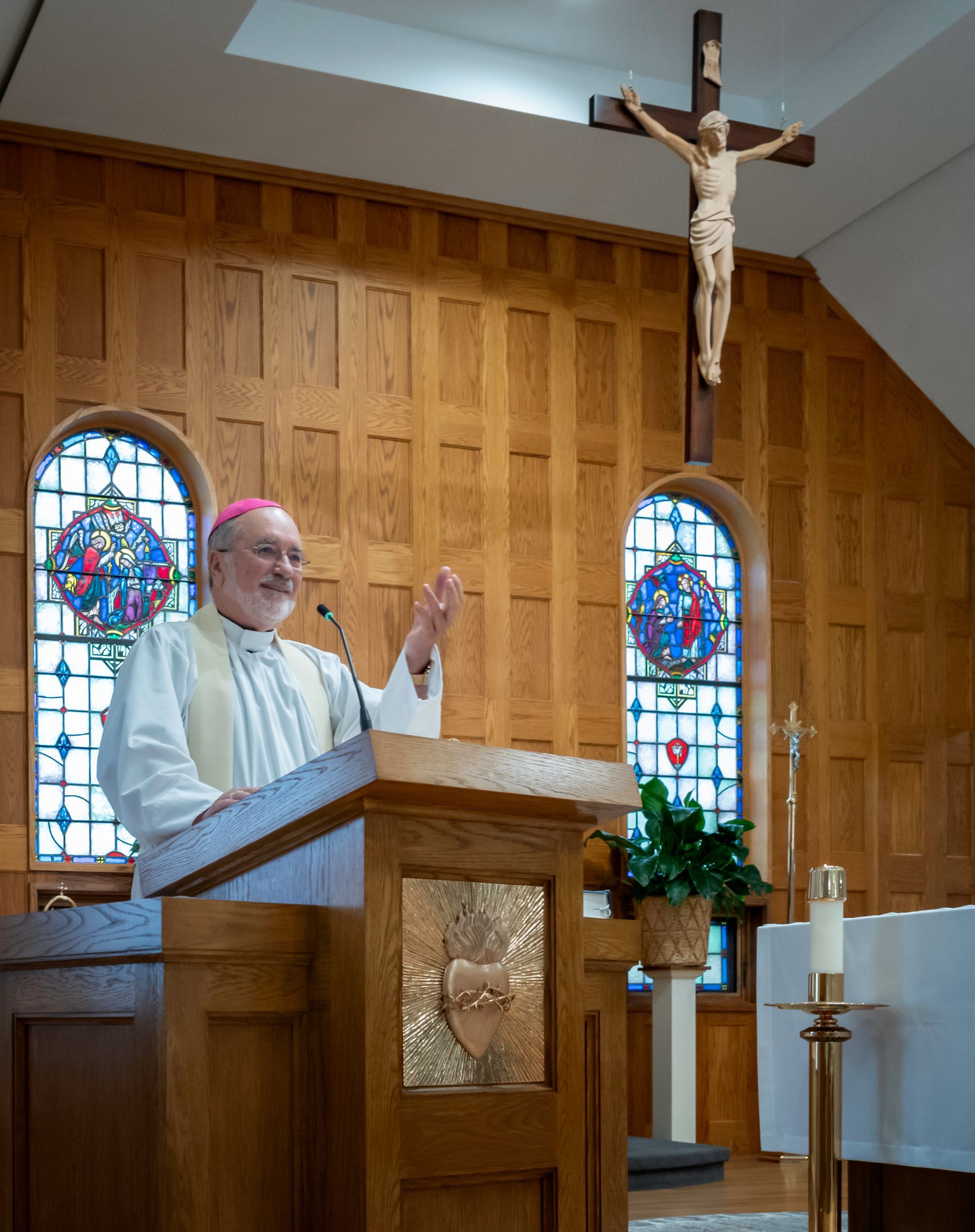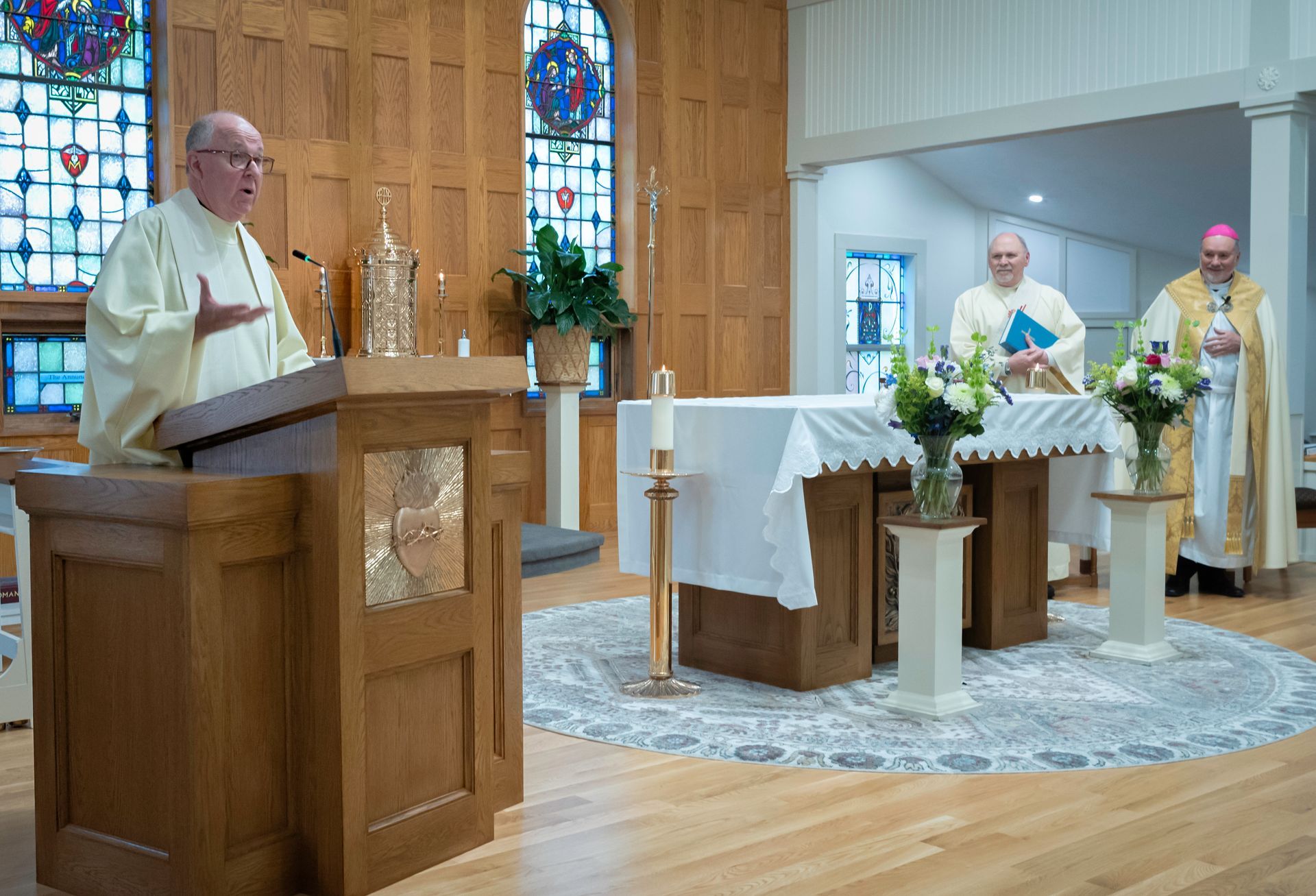From the Pastor Feb 22/23
From the Pastor Feb 22/23
Holy Year Doors of Rome
Every twenty-five years is declared a Jubilee or Holy Year by the pope. A major aspect of the celebration is the opening of the Holy Doors of each of the four Major Basilicas in Rome. Parishioners Teresa and Pat Lim made a Eucharistic Pilgrimage to Italy with a stop in Rome, and they visited the holy doors. Here are some of their recollections.
I’d watched on Christmas Eve, the Pope’s Midnight Mass, where he opened the Porta Sancta (Holy Door) at St Peter’s Basilica. Pope Francis said hope is the central message of the Jubilee.
Spes Non Confundit.
“Hope does not disappoint” (Rom 5:5). As the Pope has said in the Papal Bull, “for everyone, may the Jubilee be a moment of genuine, personal encounter with the Lord Jesus, the “door” (cf Jn10:7.9) of our salvation.
Pilgrimage is a fundamental element of every Jubilee event. Setting out on a journey is traditionally associated with our human quest for meaning in life. A pilgrimage on foot is a great aid for rediscovering the value of silence, effort, and simplicity of life.
The Holy Door, Porta Sancta, is Jesus – He is the Holy Door for us to receive God’s forgiveness, mercy, and love. In our Eucharistic Miracle Pilgrimage last October, we spent 3 days in Rome, during which we visited St Peter’s Basilica, St Mary Major (St Mary Maggiore), St John Lateran, and St Paul outside the Walls. Each of these four major basilicas has a Holy Door. We were blessed to touch them, take photos, and just marvel.
If we cannot travel as pilgrims to Rome in 2025, we can adopt the attitude of a pilgrim and make local pilgrimages to our cathedrals or shrines. On your pilgrimage make every effort to be open to conversion, repent, and live a holier life this year than we have a year ago. Develop a deeper relationship with Jesus and be the person God created you to be, by adopting and reflecting more of the values and attributes of Jesus himself.
From the Word Among Us, here is some reflection on the Jubilee celebration. We can all enter the spirit of the Jubilee by:
Making a pilgrimage. Gather a few friends or family members to plan a pilgrimage, whether to your diocesan cathedral or a local shrine or holy site. No matter how far you travel, God will bless your efforts and reward your desire to receive all the graces of this holy year, including the gift of hope.
Forgive your ‘debtors. The Jubilee Year for the Israelites was celebrated every fifty years and involved the forgiveness of debts and a call to return the land to its original owner. We can follow this spirit by forgiving the “debt” incurred against us when other people have hurt or offended us.
Do Penance. Embrace the spirit of penance by rediscovering the penitential nature of Fridays – not just by abstaining from meat, but by fasting from ‘futile distractions’ such as social media or television. We could also donate to a charity or perform spiritual or corporal mercy works.
The diocese has designated St. Francis Xavier Church in Hyannis as Cape Cod’s local Holy Year pilgrimage site. It would be a nice celebration to organize a simple parish pilgrimage in the late spring.
Celebration of Anointing of the Sick
On the weekend of March 1 & 2, we will celebrate the Sacrament of the Sick within the context of the Mass with parishioners who are candidates for Anointing. You are a good candidate if you are suffering from a chronic illness, advanced in age with diminishing strength, preparing to undergo surgery (serious enough that you will undergo general anesthesia), or are in danger of death due to illness, injury, or old age.
Recently, Pope Francis called for Catholics to better understand the Sacrament of the Sick. Popularly known as the “Last Rites,” the sacrament isn’t only for people approaching death. It is a sacrament of healing meant to fill a sick person with God’s grace for physical and spiritual healing.
The Sacrament of the Sick helps the afflicted person be reminded of the power of prayer to save the sick person. The Anointing signifies Christ’s compassion and hope for the sick. It gives the afflicted's family solace reminding everyone they are not alone in their suffering.
The Anointing of the Sick offers the ill, special graces by uniting their afflictions to Christ’s passion for their good and that of the whole Church and gives them the strength and peace to endure their suffering and pain in a Christian manner. The anointed person receives conditional forgiveness for their sins, healing, and purification of their soul.
Actual last rites are more than the Anointing of the Sick. They include Reconciliation, Viaticum (Communion), and the Apostolic Blessing. Caregivers shouldn’t wait to call a priest to visit someone who is dying. He should be called while the sick person is alert enough to ask for absolution and swallow communion. Spread the word about the correct understanding of “last rites” and help bring solace to suffering souls.
Coffee & Donuts
We aim to spoil your appetite. Coffee & donuts or other refreshments will be offered after Masses next weekend and the first weekend of every month. Everyone is invited to our newly renovated Parish Center to join the conversation and fraternity of parish life. The best access to the hall is through the elevator lobby doors to the left of the altar.
Bring Us Your Old Palms
Beginning next weekend, we will collect your old palms to burn to make ashes for distribution on Ash Wednesday. Baskets to collect them will be placed in both lobbies. On Sunday, March 2, at 3 p.m., we’ll have a short prayer service to burn the old palms.

